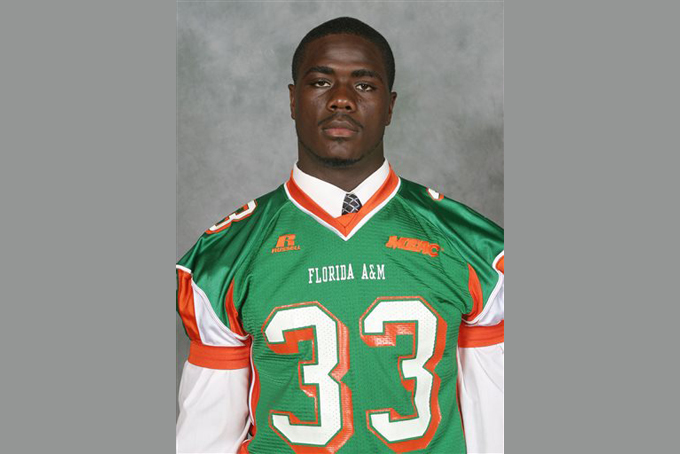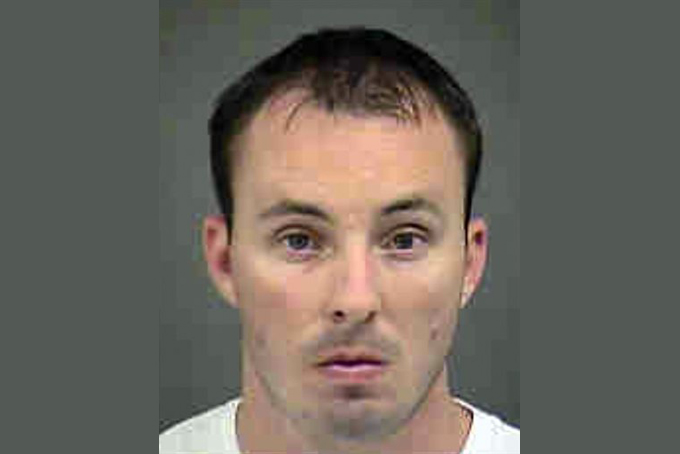
Jonathan Ferrell is seen in an undated photo provided by Florida A&M University. (AP Photo/Florida A&M University)
by Mich Weiss
Associated Press Writer
CHARLOTTE, N.C. (AP) — North Carolina’s attorney general said Thursday that his office will handle the prosecution of a police officer charged with fatally shooting an unarmed man.
Mecklenburg County District Attorney Andrew Murray said he requested the state help because before he was elected, Murray was a partner in the law firm representing the officer and he didn’t want to give the appearance of impropriety.
Authorities say Jonathan Ferrell was shot 10 times early Saturday by Charlotte-Mecklenburg Officer Randall Kerrick. Police have said Ferrell may have been seeking help after a car wreck when he went to a home and knocked on the door, frightening a woman into calling 911 because she thought he was trying to break in.
“This case is clearly a tragedy and we will work to bring it to a just resolution,” said Attorney General Roy Cooper. “We have accepted the Mecklenburg District Attorney’s request to take over the prosecution of this case.”

This booking photo provided by the Mecklenburg County Sheriff’s Office on Sunday, Sept. 15, 2013, shows Charlotte police officer Randall Kerrick. (AP Photo/Mecklenburg County Sheriff’s Office)
He said the Special Prosecutions unit will handle the case in the courts and State Bureau of Investigation agents will conduct an independent investigation.
Murray said he didn’t have to withdraw from the case but “avoiding even the appearance of impropriety is essential to maintaining the public’s trust.”
“The nature of the case against Mr. Kerrick is such that the community will be affected by any and all decisions regarding the prosecution and final disposition of the case,” he said.
The two attorneys representing Kerrick — George Laughrun and Michael Greene — were hired this week by the Fraternal Order of Police.
Earlier this week, Ferrell’s family said the former Florida A&M University football player moved to Charlotte about a year ago to be with his fiancee and was working two jobs. He wanted to go back to school and eventually become an automotive engineer, they said. He had no criminal record.
Representatives of the NAACP questioned whether race played a role in the shooting of the black man by a white officer. Though there was praise for police for quickly filing charges, some said the shooting didn’t surprise them, considering portrayals of black men in popular culture and previous instances of racially inflected violence.
Over the last few days, more details about the shooting have been disclosed.
The encounter was set in motion around 2:30 a.m. Saturday when Ferrell’s car ran off the entrance road to a suburban neighborhood about 15 miles from downtown Charlotte.
After crashing his car into trees, Ferrell kicked out the back window and headed up a hill to the first set of closely clustered houses he could see. He then started “banging on the door viciously” of a home to attract attention, police Chief Rodney Monroe said.
Kerrick and two other officers responding to the breaking and entering call found Ferrell on a road that only leads to the neighborhood’s pool. Ferrell ran toward the officers, who tried to stop him with a Taser. Police said he continued to run toward them and Kerrick fired 12 shots, hitting Ferrell with all but two. Ferrell died at the scene.
But in an interview with The Charlotte Observer’s editorial board, Chief Rodney Monroe said a Taser was fired by a second officer missed Ferrell. He also said that the first shots were fired from “a couple of feet,” and there was physical contact between Kerrick and Ferrell after the first shots had been fired.
The chief said that even if Ferrell didn’t stop running toward Kerrick, deadly force wasn’t justified. Ferrell was unarmed, and both Monroe and Ferrell family attorney Chris Chestnut, who watched the dashboard video of the shooting, said that was clear. Chestnut said Ferrell had his hands outstretched, and they were empty.
Messages left for Monroe were not returned Thursday.
Laughrun said he also watched the video and said officers told Ferrell to stop at least three times before Kerrick fired.
Laughrun said the video “clearly shows the shooting was justified” and that Kerrick fired because Ferrell didn’t obey the verbal commands.